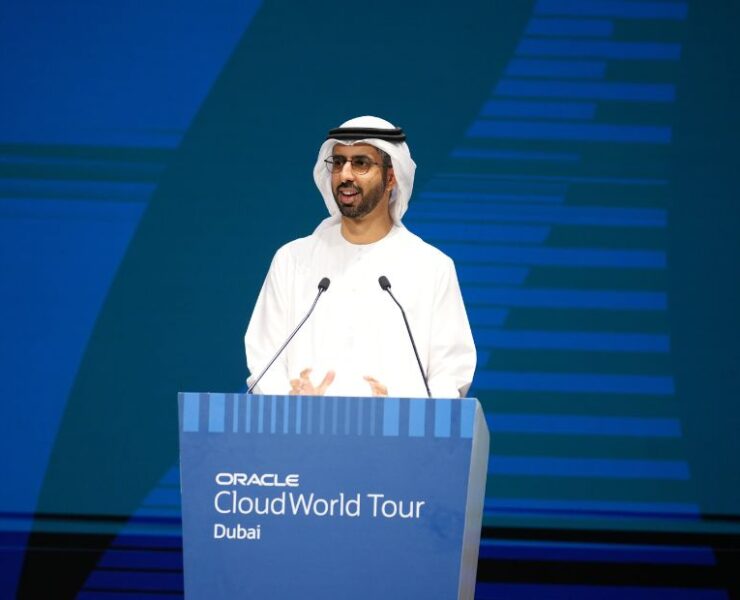Insights: Why workforce transformation hinges on AI
Leverage generative AI to enhance productivity, improve candidate and employee experience, and streamline HR processes

In a world of increasing disruption and rapid transformation, resignation rates and employee demands, people teams are feeling more stressed than ever before. For the second year in a row, employee stress reached record levels around the world, and HR teams are feeling the effects.
Dealing with the Great Resignation and workplace transformation, 60 per cent of HR employees report exhaustion due to overworking, with 42 per cent of people teams struggling with too many projects and responsibilities.
To alleviate pressure and reduce burnout, overworked HR staff are turning to human capital management (HCM) platforms to drive faster business value, improve productivity, enhance the candidate and employee experience, and streamline HR processes.
In today’s dynamic work landscape, the transformative potential of this technology and the addition of artificial intelligence (AI) and generative AI is contributing to taking HR teams to the next level.
In recent months, we all have heard about the transformative effect that AI can have on different departments, and HR is no different.
By using technology to improve workplace communications, harnessing AI-powered solutions, and embracing the latest innovations in generative AI, organisations can drive significant advancements in areas like employee experience, retention, and remote working.
Refreshing workplace communications
Improving communication in the workplace is a key part of feeling more connected with the workforce, alleviating stress and boosting retention. However, while 74 per cent of communicators think they write concise and effective internal communications, 60 per cent of their employees say they don’t.
On the people side, ensuring that senior leadership plays a pivotal role in messaging is key to helping communications carry more weight. It also needs to be a two-way exchange, giving the workforce the opportunity to raise issues and identify roadblocks to success.
Keeping communications authentic and transparent helps to build trust, especially during periods of change such as digital transformation, and internal communications must reemphasise the vision and strategy of your organisation to gain employee buy-in.
HCM technology can help support the improvement of internal communications, making them more consistent, relevant, and personalised. Instead of sending emails to a generic all-employee list and incurring message fatigue, leaders can filter communications by position, demographic, or department, ensuring that all employees get the targeted information they need.
Using automation, communications can be delivered more consistently at regular intervals, whilst a secure intranet stores documents and shared files, only giving access to relevant staff members. HR teams can also use this software to survey employees and feed improvements back into their comms and operations strategies.
AI leading HCM transformation
Although HCM technology already brings great benefits to internal communications, bringing AI into the mix can prove invaluable to further improve operations, day-to-day tasks, and employee engagement.
Notable examples of AI in action include in-person healthcare roles and remote working. For instance, AI can be a powerful ally in the healthcare sector, helping to combat burnout, offering on-demand access to schedules, addressing fatigue-related challenges, and empowering career development. Like in any industry, by providing on-demand access to schedules and work-life balance management, organisations can alleviate the burden on employees and encourage a focus on mental health and well-being.
Looking at more remote work, a growing community of digital nomads are using AI solutions to access invaluable assistance in organising virtual meetings, identifying optimal workspaces with reliable Wi-Fi connectivity, and implementing policies to facilitate compliance and support. As organisations and nomads embrace AI-driven strategies, they can unlock new realms of productivity, well-being, and engagement, paving the way for a future where the workforce thrives in harmony with technological innovation.
Generative AI brings the next-gen HCM
Taking things one step further, generative AI can bring HCM up to the next level. This innovation can drive faster business value, improve productivity, enhance the candidate and employee experience, and streamline HR processes.
Key functions that generative AI can provide to people teams are the ability to summarise, author, and suggest content. First, its summarisation capabilities can pull out key insights from one or more data sources for simple and impactful consumption, reducing time-consuming data retrieval. This is a great tool when providing a summary of an employee’s performance.
Generative AI can pull information from feedback gathered across the year from the employee, peers, or managers, as well as goal progress and achievements, summarising it for managers and HR professionals.
Next, thanks to assisted authoring, HR leaders can input a short prompt, such as a draft title for a job requisition or performance goal, and generative AI can quickly generate content for review, leaving it to the human to revise and approve. This proves invaluable in the creation of job descriptions, automated goals, and the generation of articles to assist managers in their own HR tasks.
Finally, using generative AI for suggestions can help to guide users to achieve better, faster, and more accurate results based on natural language processing and best practices.
For instance, automated recommendations for survey questions based on the type of survey being designed, or development tips for managers to provide to their employees. When generative AI is trained from Large Language Models (LLMs) under the business’s control, generated content and suggestions can harness the language and culture of the organisation and help keep sensitive and proprietary information safe.
Communication and effective HR practices are key to keeping employees engaged and motivated. An informed workforce is likely to remain committed, loyal, and productive. When HR leaders are equipped with the tools to reduce burnout and work more efficiently, they can have more time to focus on what is important – helping the entire organisation.
The author, Sarah Henry is VP – Business Operations – EMEA Applications at Oracle




